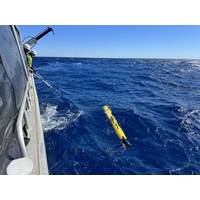
UTEC Puts Upgraded AUV on Try-Outs Offshore Australia
UTEC, a geo-services brand in Acteon’s Data and Robotics division, has conducted trials on its upgraded Gavia autonomous underwater vehicle (AUV), off Fremantle in Western Australia.The AUV has recently undergone significant upgrades and the addition of new modules including the subsea ultra-short baseline (USBL) aiding the vehicle inertial navigation system (INS) positioning.The trial tested the AUV in its reconfiguration and provided further training for the local crew with the support of UTEC’s AUV specialists from the UK.Following on from the training and trials completed since the AUV
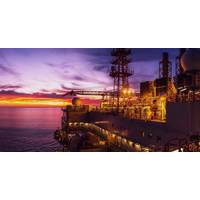
McDermott and Baker Hughes Install Subsea Infrastructure at Ichthys Field
projects in the world. The energy development is a joint venture between INPEX group companies (the operator), major partner TotalEnergies, and the Australian subsidiaries of CPC Corporation Taiwan, Tokyo Gas, Osaka Gas, Kansai Electric Power, JERA and Toho Gas.Located about 220 kilometers offshore Western Australia and 820 kilometers southwest of Darwin, the Ichthys Field covers an area of around 800 square kilometers in water averaging depths of around 250 meters.The Ichthys Field is estimated to contain more than 12 trillion cubic feet of gas and 500 million barrels of condensate

Top 10 Things to Watch in Offshore Wind in '24
, France, Denmark, Poland, etc.), U.S., and Asian (Taiwan, South Korea and Japan) offshore wind markets.4 .Potential in Australia and South AmericaAustralia is seeking to identify developers for a number of multi-gigawatt sites, both bottom-fixed and floating, off Vicotria, New South Wales and Western Australia for commissioning in the next decade. In South America, Brazil and Columbia are the emerging markets, developing permitting frameworks and offshore wind opportunities. In addition to Australia and South America, we anticipate that new commercial-scale markets will emerge in the waters of Europe&rsqu

Countdown is On for SPE Offshore Europe 2023
, young professionals and those outside the industry interested in joining the sector.More than 800 companies and organisations will exhibit at SPE Offshore Europe and more than 10 pavilions will feature groups of exhibitors from countries and industry organisations from around the world including Western Australia, China, France, Norway and USA.The energy transition is playing a more prominent role than ever before, and the show will introduce ‘Towards Net ZerOE’ for the first time. The new colour-coded trail will highlight exhibitors across all three halls who have a relevant solution to
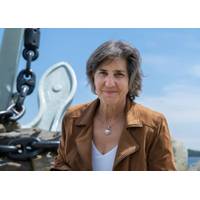
Happy to be Blue
with being at sea.”After Dalhousie, Waite completed her PhD in biological oceanography at the University of British Columbia and then held postdoctoral positions at Woods Hole Oceanographic Institute and Victoria University in New Zealand. She soon took a professorship at the University of Western Australia in Perth, where she taught and led research for 17 years. In 2014, Waite became section head of polar biological oceanography at the Alfred Wegener Institute for Polar and Marine Research before returning to Halifax and her alma mater in 2018.Q: Within your career, do you have a most valuable
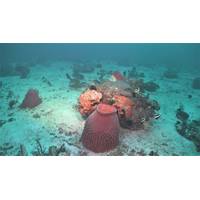
Corals Make Light Work of Photosynthesis Despite Lack of Sunshine
New Curtin University research has found reef-building corals living deep underwater off the coast of Western Australia’s Kimberley region survive despite a lack of sunlight by kicking into ‘photosynthesis overdrive’ to enhance their ability to gain energy from sunlight and by upping their intake of microorganisms.The study was done at Ashmore Reef Marine Park and focused on largely unexplored deepwater mesophotic coral, which live between about 30m and 150m deep, a zone where the limited amount of light is challenging for corals, which obtain most of their energy from the sun.
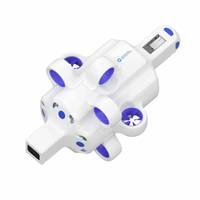
Advanced Navigation Opens Subsea Robotics Center in Australia
Advanced Navigation announced the opening of its new subsea robotics facility in Balcatta, Western Australia. The high-tech manufacturing and R&D facility will accelerate the production of the company's underwater technologies, including its autonomous underwater robot Hydrus."Now more than ever, there is a need to open up the earth's oceans, to make data and knowledge more accessible to global communities, research institutions and governments. Western Australia has always been an exploration hub for ocean discoveries."The new subsea center will help Advanced Navigation meet the
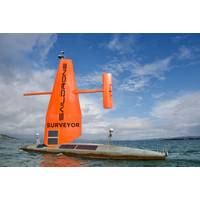
Saildrone Expands Partnership with Austal
(ISR) applications, above and below the surface. The Surveyor is autonomous and uncrewed, offering extreme endurance, reliability, and cost-effective operations.Saildrone’s founder and chief executive officer Richard Jenkins is an Australian National, having grown up in the southwest of Western Australia. Jenkins went to school mainly in the U.K. and moved to America in 2009 to start the business. “It is fantastic to be bringing technology, innovation, and investment back to Australia, and specifically to my home city of Perth,” Jenkins said.“I am very excited to have Austal
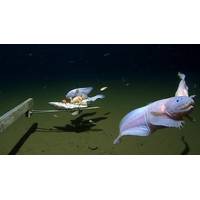
Scientists Find World's Deepest Fish
- by a joint Japanese-Australian scientific expedition.The expedition's chief scientist, Professor Alan Jamieson, said on Monday that two snailfish were caught in traps set 8,022 metres underwater in the Japan Trench, south of Japan, during a two-month voyage by a team from the University of Western Australia (UWA) and the Tokyo University of Marine Science.The snailfish, of the Pseudoliparis belyaevi species, are the first to be caught below 8,000 metres, the expedition said. It wasn't immediately clear how big the fish were, but the species has been recorded as reaching a length of close to



 February 2024
February 2024





